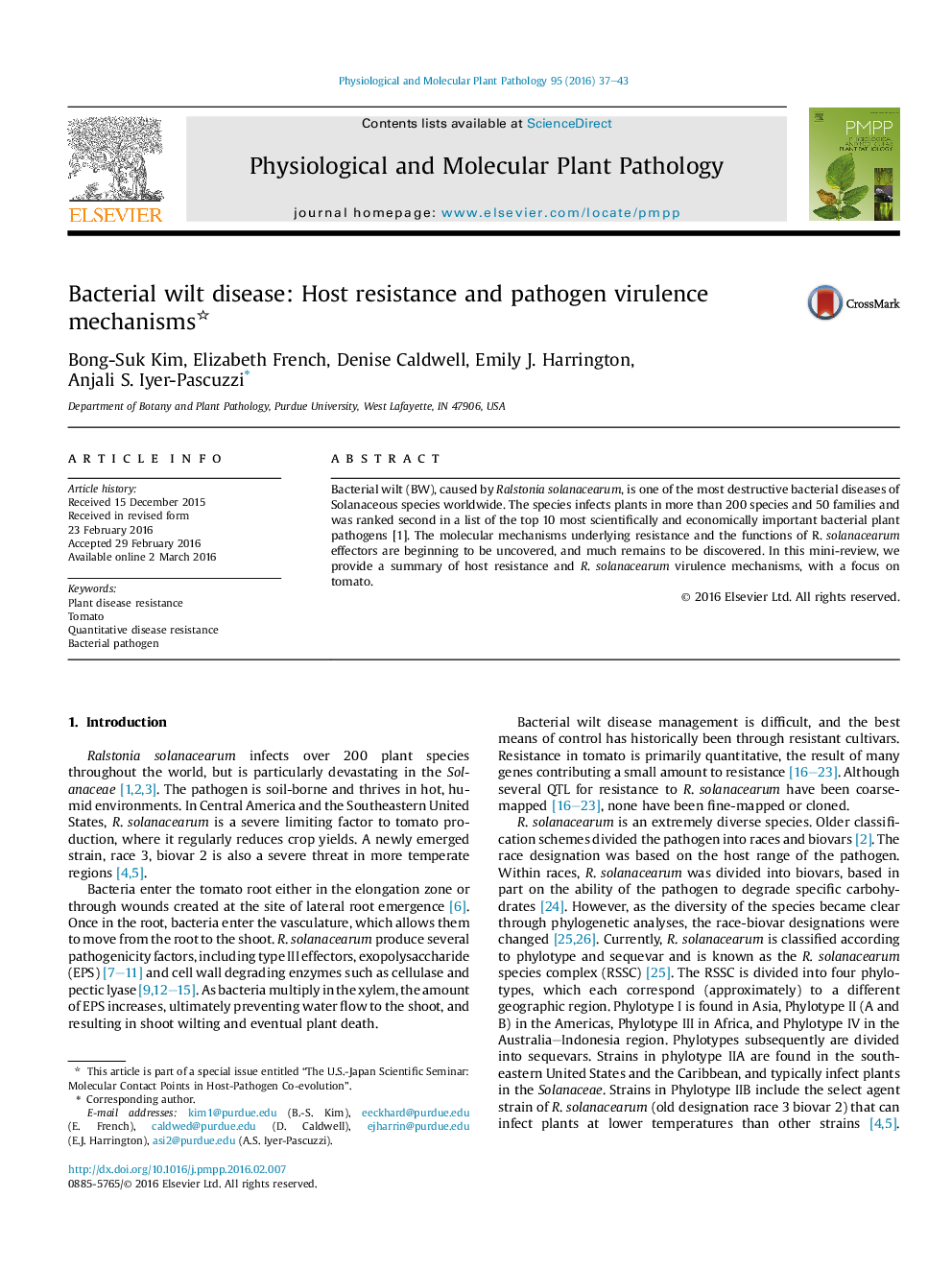| کد مقاله | کد نشریه | سال انتشار | مقاله انگلیسی | نسخه تمام متن |
|---|---|---|---|---|
| 2836176 | 1570844 | 2016 | 7 صفحه PDF | دانلود رایگان |
• Resistance in tomato to Ralstonia solanacearum is quantitative.
• Several QTL for resistance have been mapped, including a ‘hot-spot’ on chromosome 6.
• Biocontrol and soil amendments can promote resistance.
• Both type II secretion system and T3SS are important for R. solanacearum virulence.
Bacterial wilt (BW), caused by Ralstonia solanacearum, is one of the most destructive bacterial diseases of Solanaceous species worldwide. The species infects plants in more than 200 species and 50 families and was ranked second in a list of the top 10 most scientifically and economically important bacterial plant pathogens [1]. The molecular mechanisms underlying resistance and the functions of R. solanacearum effectors are beginning to be uncovered, and much remains to be discovered. In this mini-review, we provide a summary of host resistance and R. solanacearum virulence mechanisms, with a focus on tomato.
Journal: Physiological and Molecular Plant Pathology - Volume 95, July 2016, Pages 37–43
